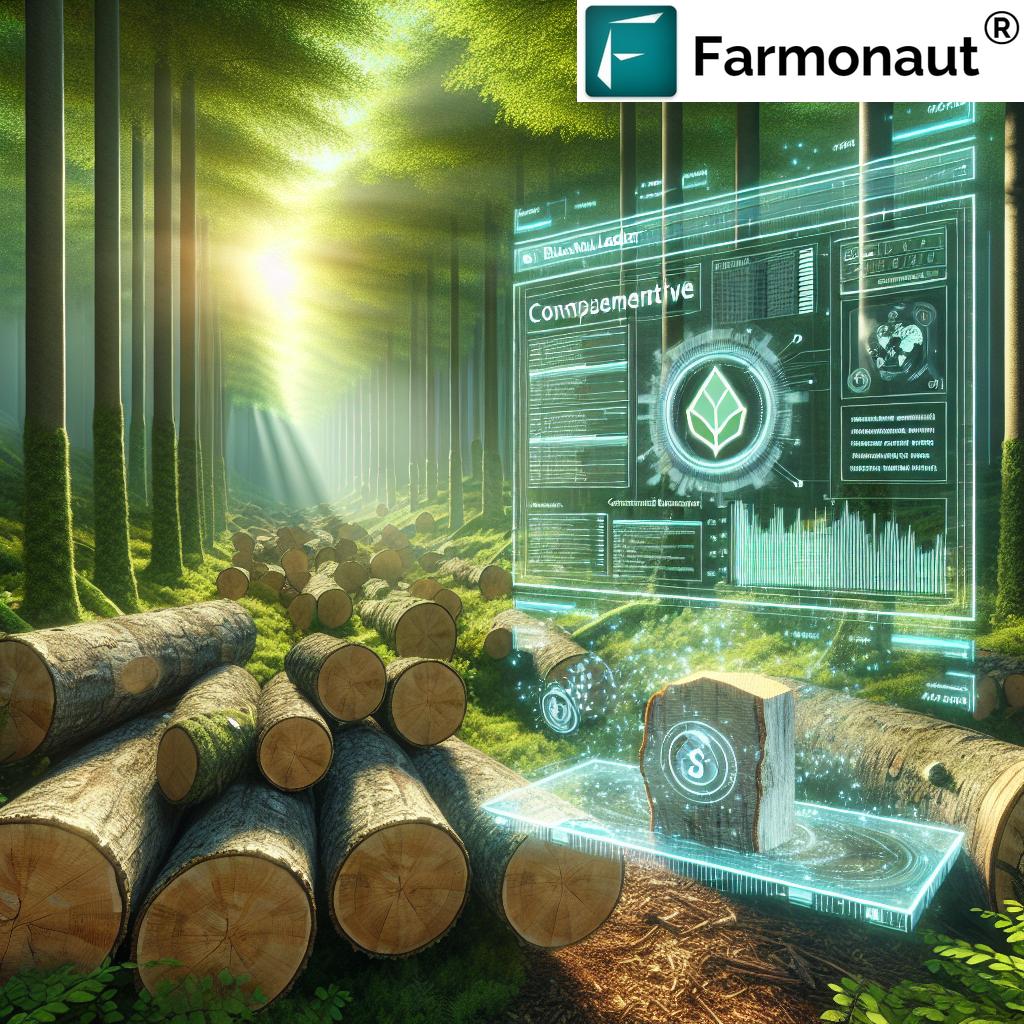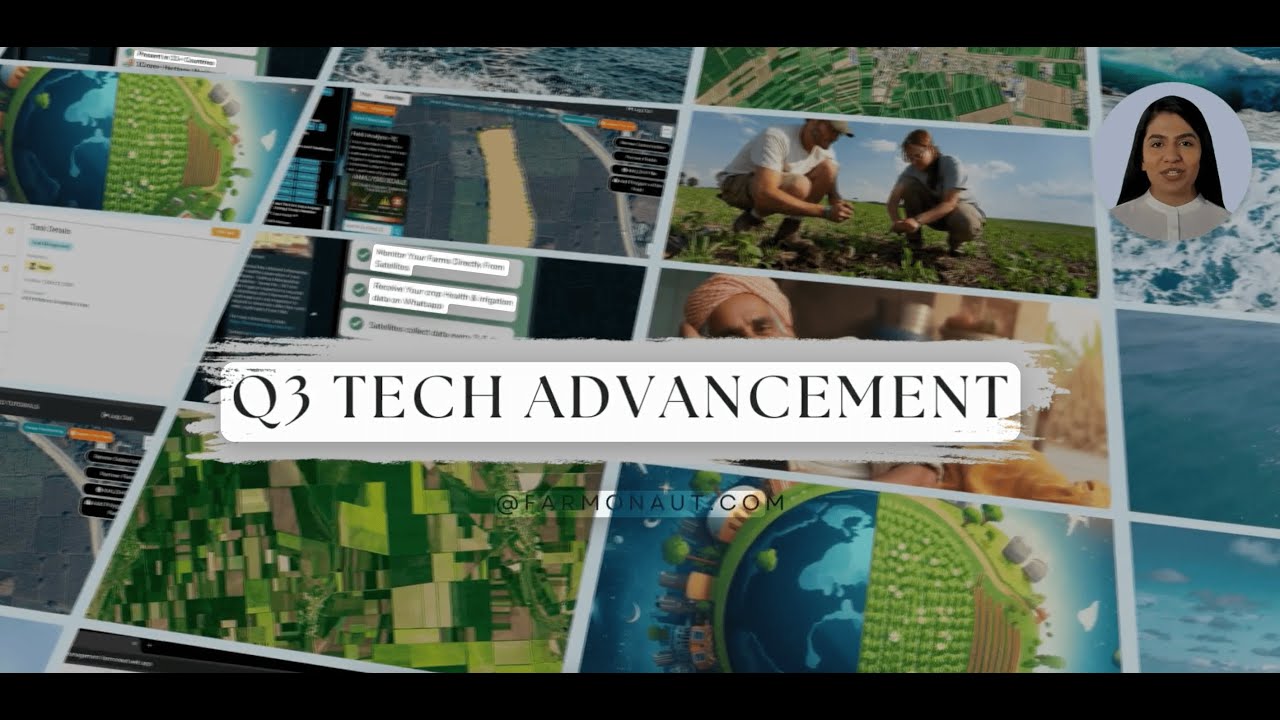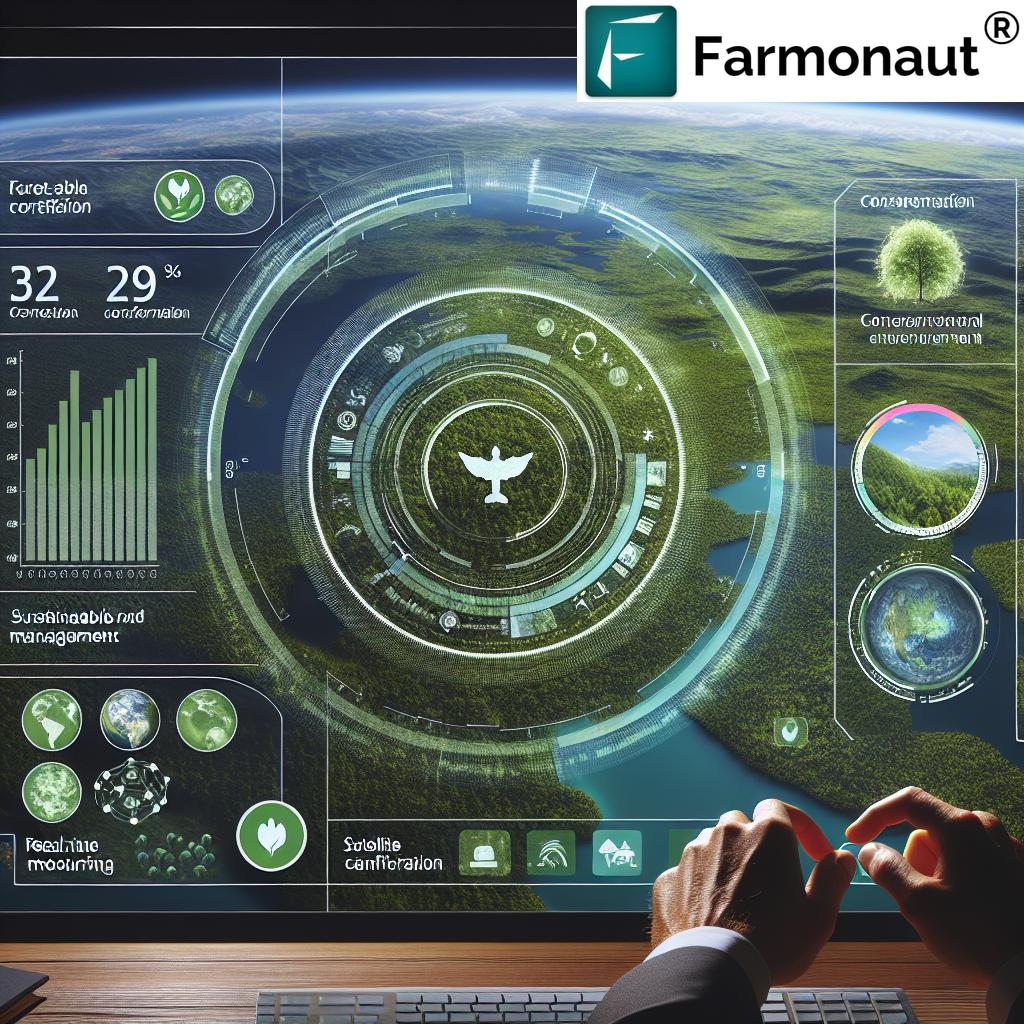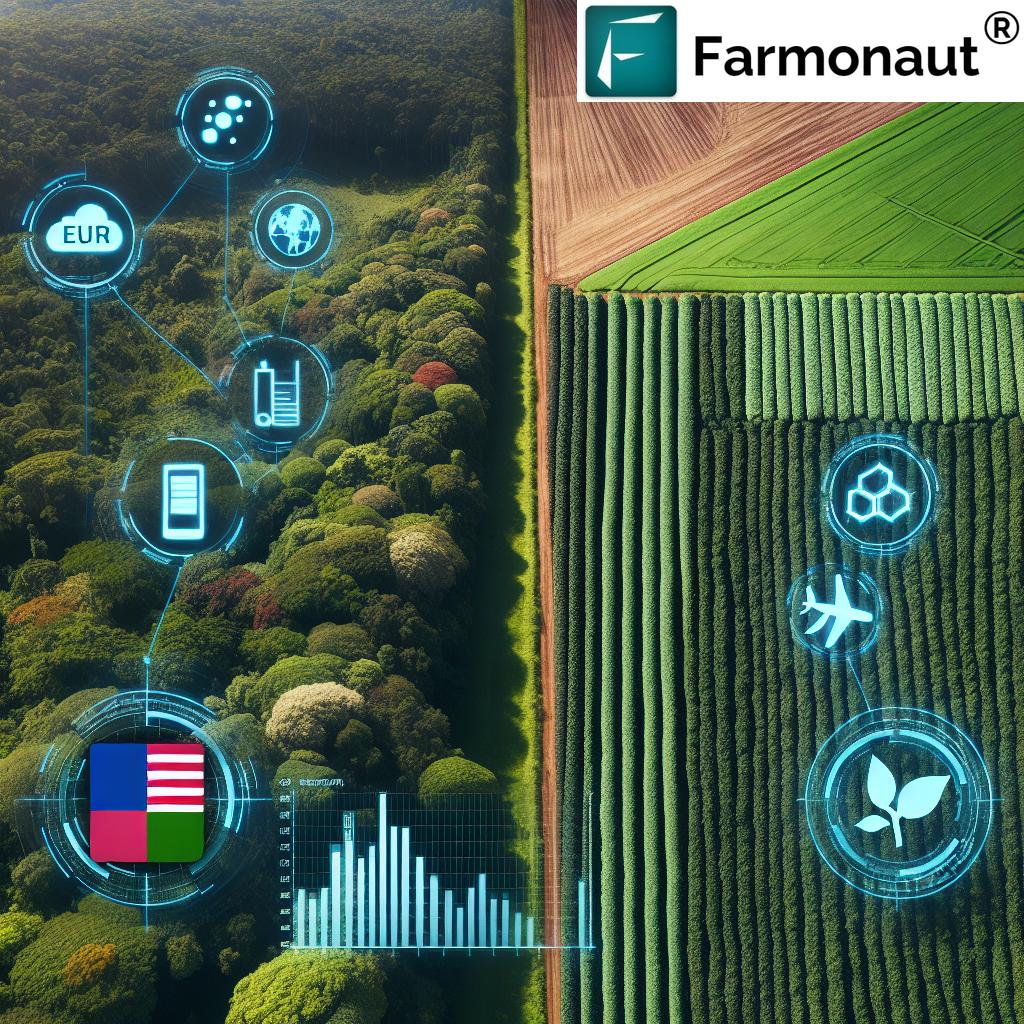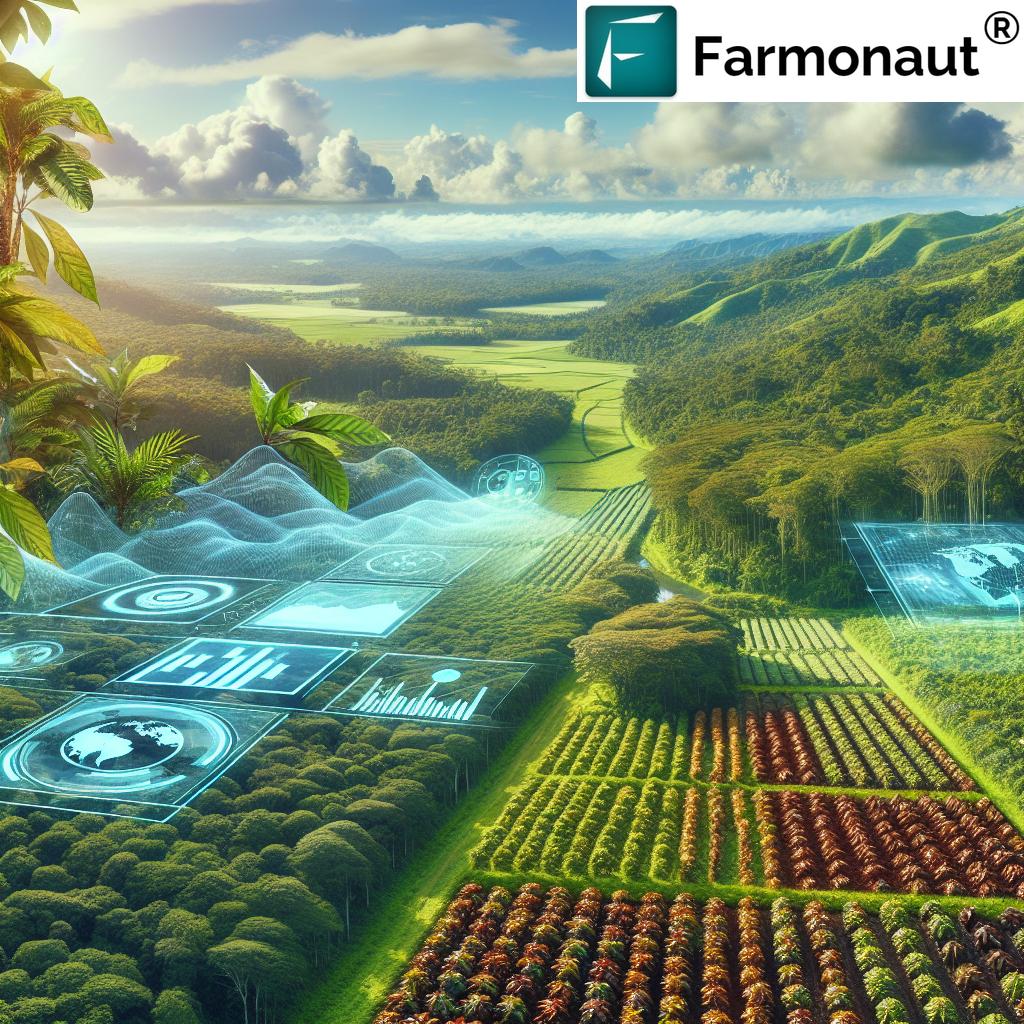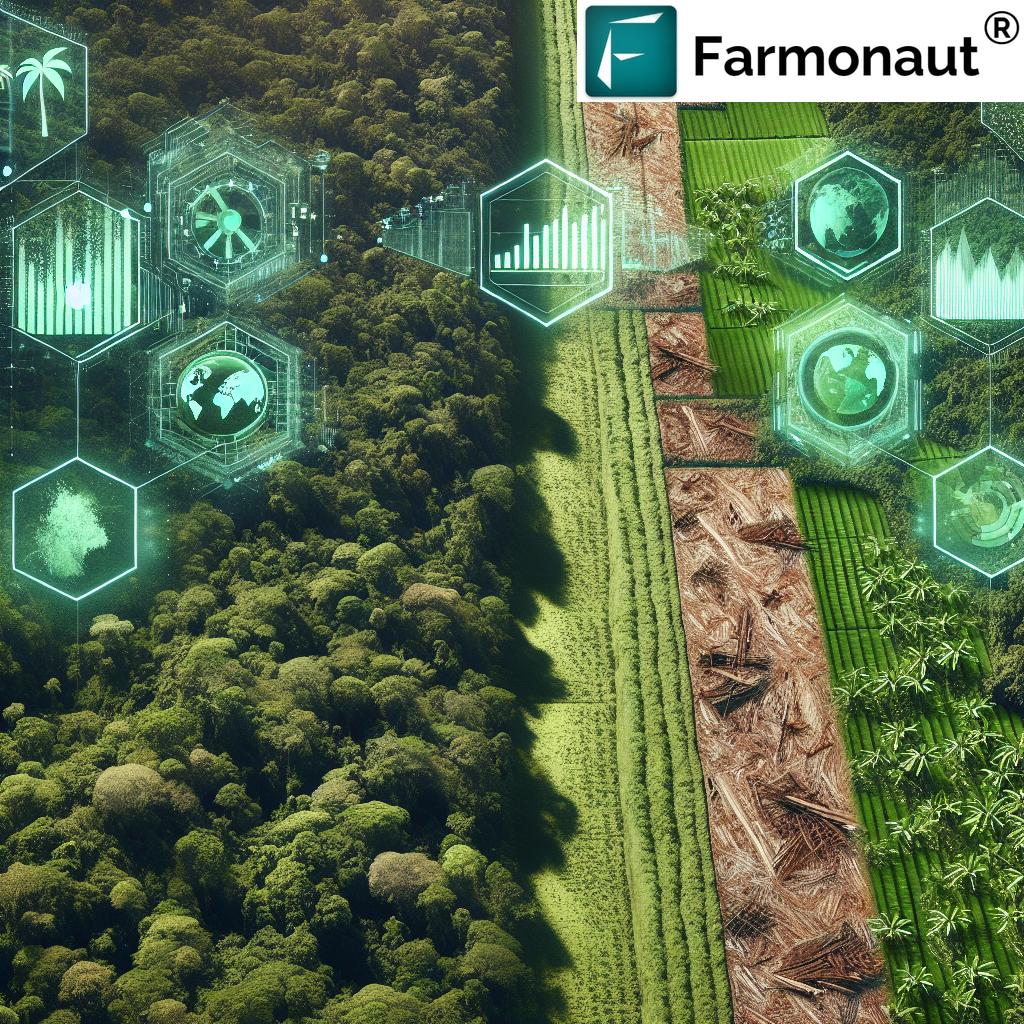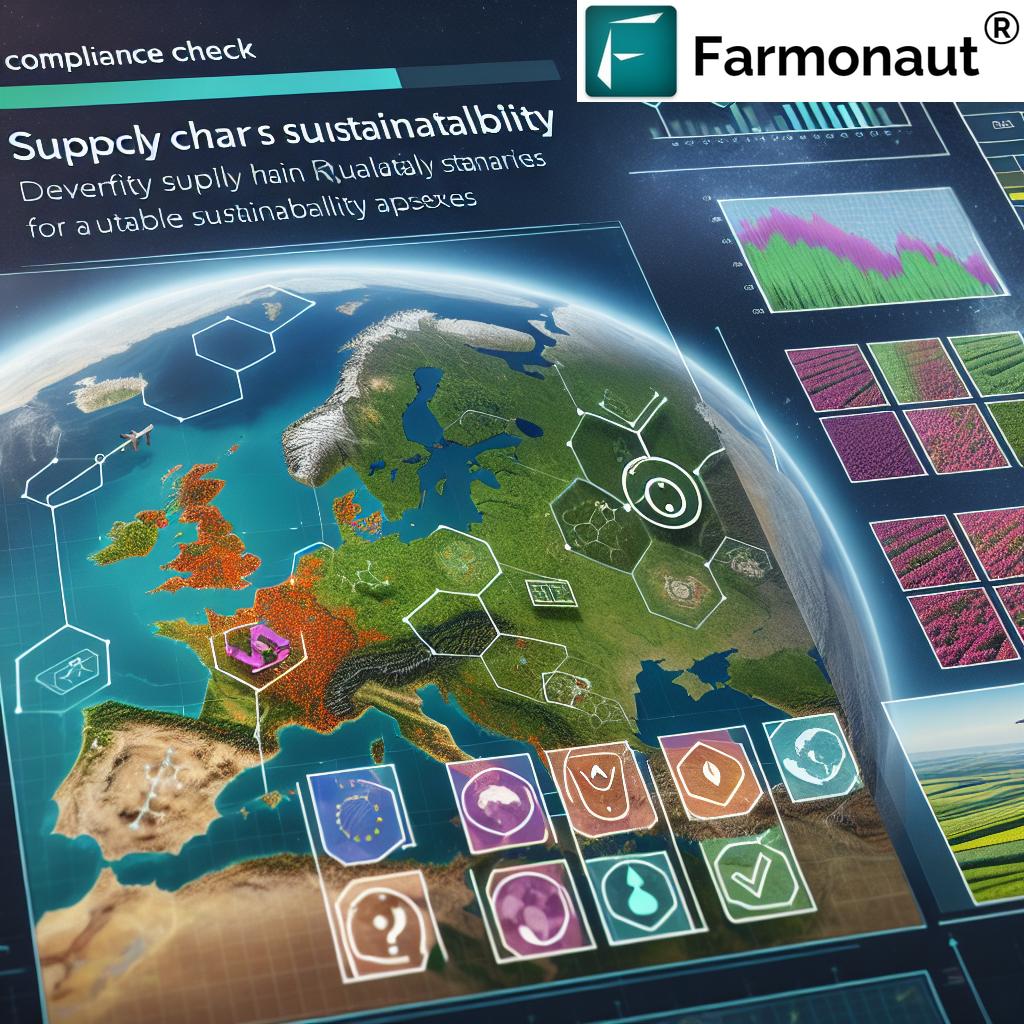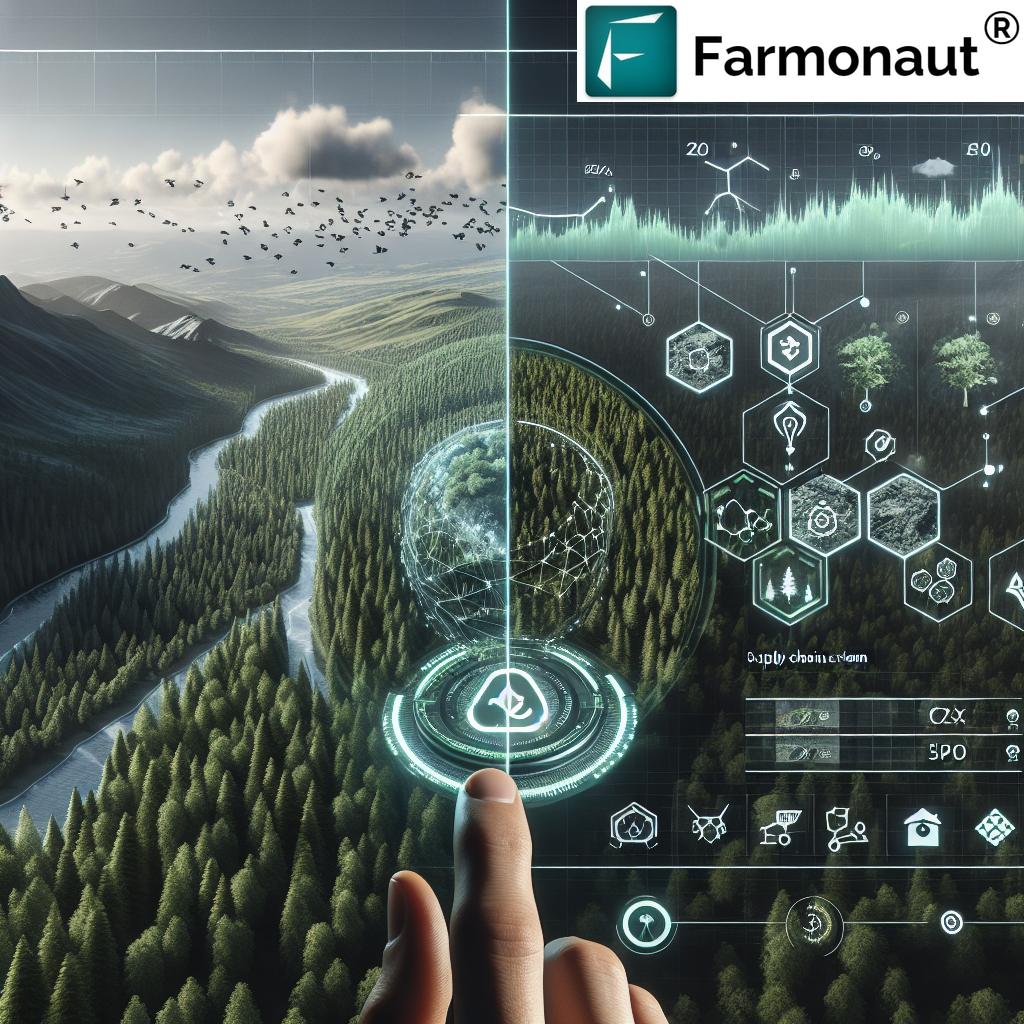Revolutionizing Forest Stewardship: How Blockchain and EU Regulations Are Reshaping Sustainable Timber Industry Practices
“The EU Deforestation Regulation affects 65% of global tropical deforestation linked to EU consumption.”
In an era where environmental sustainability is at the forefront of global concerns, we are witnessing a profound transformation in the timber industry. The convergence of innovative technologies like blockchain and stringent regulations such as the EU Deforestation Regulation is reshaping the landscape of sustainable forestry practices. As we delve into this paradigm shift, we’ll explore how these changes are impacting the wood pellet supply chain, forest certification standards, and the overall approach to forest stewardship.
The Changing Face of Forest Certification Standards
Forest certification standards have long been the backbone of sustainable forestry practices. However, the rapid evolution of technology and increasing global awareness of environmental issues have necessitated a reimagining of these standards. The Forest Stewardship Council (FSC), a pioneer in forest certification, is at the forefront of this change, adapting its processes to meet the demands of a more environmentally conscious world.
- Enhanced traceability requirements
- Stricter criteria for sustainable harvesting
- Integration of digital technologies for verification
These enhanced standards are not just about maintaining the status quo; they’re about pushing the boundaries of what’s possible in sustainable forest management. By raising the bar, certification bodies are encouraging forest managers and timber companies to adopt more responsible practices, ultimately leading to better-protected forests and more sustainable wood products.
The EU Deforestation Regulation: A Game-Changer for the Timber Industry
The introduction of the EU Deforestation Regulation marks a significant milestone in the global fight against deforestation. This regulation aims to ensure that products sold in the EU market are deforestation-free, putting immense pressure on the timber industry to verify the origins of their wood and wood products.
- Mandatory due diligence requirements for operators
- Geolocation requirements for wood sourcing
- Increased scrutiny on supply chains
For the wood pellet supply chain, this regulation presents both challenges and opportunities. While it necessitates more rigorous tracking and verification processes, it also opens doors for companies that can demonstrate their commitment to sustainable sourcing. This shift is driving innovation in the industry, with many companies turning to advanced technologies to meet these new requirements.
Blockchain: The New Frontier in Forest Product Verification
Blockchain technology is emerging as a powerful tool in the quest for transparent and verifiable supply chains in the timber industry. By providing an immutable ledger of transactions, blockchain offers unprecedented traceability from forest to end-user.
“Blockchain technology in forestry can reduce timber tracking errors by up to 95%, enhancing supply chain transparency.”
- Real-time tracking of timber from harvest to market
- Immutable records of certification and compliance
- Enhanced trust between stakeholders
The integration of blockchain in forestry is not just about compliance; it’s about creating a new standard of transparency and accountability in the industry. This technology has the potential to revolutionize how we verify the authenticity of forest products, ensuring that claims of sustainability can be backed by solid, tamper-proof evidence.
Advanced Wood Identification Technology: A Complement to Blockchain
While blockchain provides the framework for traceability, advanced wood identification technologies are filling in the gaps by offering physical verification of wood species and origins. These technologies include:
- DNA testing of wood samples
- Isotope analysis for geographical origin verification
- Machine learning algorithms for wood species identification
By combining these technologies with blockchain, we’re creating a multi-layered approach to wood product verification. This not only helps in compliance with regulations like the EU Deforestation Regulation but also provides consumers with greater confidence in the products they’re purchasing.
The Impact on Forest Managers and Organizations
For forest managers and organizations, these changes in the industry landscape present both challenges and opportunities. The increased focus on traceability and sustainability is pushing many to reevaluate their practices and invest in new technologies.
- Adoption of digital tools for forest inventory and monitoring
- Investment in training for new certification standards
- Collaboration with technology providers for blockchain integration
While these changes may seem daunting, they also offer forest managers the chance to differentiate themselves in the market. Those who can demonstrate robust sustainability practices and transparent supply chains will likely find themselves at a competitive advantage in this new era of forest stewardship.
Collaborative Efforts: Governments and Businesses Working Together
The scale of the challenge in reshaping the timber industry requires collaboration between governments and businesses worldwide. We’re seeing increasing partnerships aimed at:
- Developing standardized protocols for blockchain in forestry
- Creating shared databases for wood identification
- Harmonizing certification standards across regions
These collaborative efforts are crucial in creating a unified approach to sustainable forestry. By working together, governments and businesses can create a more robust and effective system for ensuring the integrity of forest products.
The Role of Research and Data in Driving Forest Management Strategies
As we move towards more technology-driven forest management, the role of research and data becomes increasingly important. Advanced satellite imaging, AI-powered analysis, and big data are transforming how we understand and manage our forests.
- Real-time monitoring of forest health and biodiversity
- Predictive modeling for sustainable harvest planning
- Data-driven decision-making in forest conservation efforts
This wealth of data is not only improving our ability to manage forests sustainably but also providing valuable insights that can inform policy decisions and certification standards.
The Future of Sustainable Forestry in a Changing Global Market
As we look to the future, it’s clear that the timber industry is at a pivotal point. The convergence of stricter regulations, advanced technologies, and increased consumer awareness is creating a new paradigm for sustainable forestry.
- Increased demand for certified, deforestation-free products
- Growth in markets for alternative wood products
- Emergence of new business models centered around sustainability
For businesses in the timber industry, adapting to these changes is not just about compliance; it’s about positioning themselves for long-term success in a market that increasingly values transparency and sustainability.
Comparison: Blockchain-Enabled vs. Traditional Forest Certification Systems
| Certification Aspect | Traditional System | Blockchain-Enabled System | Impact on Sustainability |
|---|---|---|---|
| Traceability | Limited, often paper-based | End-to-end, real-time tracking | Significantly improved chain of custody |
| Verification Speed | Days to weeks | Minutes to hours | Faster response to sustainability issues |
| Data Security | Vulnerable to tampering | Immutable and encrypted | Enhanced credibility of sustainability claims |
| Cost Efficiency | High administrative costs | Reduced long-term costs | More resources for sustainable practices |
| Transparency | Limited visibility | Full supply chain transparency | Increased stakeholder trust |
| Fraud Prevention | Moderate effectiveness | High effectiveness | Reduced illegal logging and associated environmental damage |
| Compliance with EU Deforestation Regulation | Challenging to meet all requirements | Facilitates compliance through built-in features | Easier adoption of stringent sustainability standards |
The Role of Technology in Enhancing Forest Stewardship
As we navigate this new era of forest stewardship, technology plays a crucial role in enhancing our ability to manage forests sustainably. Companies like Farmonaut are at the forefront of this technological revolution, offering innovative solutions that can be applied to forestry management.
While Farmonaut’s primary focus is on agricultural technology, many of its solutions have relevant applications in the forestry sector. For instance, their satellite-based monitoring systems, originally designed for crop health assessment, can be adapted for forest health monitoring. This technology allows for real-time tracking of forest cover, early detection of deforestation, and assessment of forest health on a large scale.
- Satellite-based forest monitoring
- AI-powered analysis of forest health
- Blockchain-based traceability solutions
These technologies, when applied to forestry, can significantly enhance our ability to manage forests sustainably and meet the stringent requirements of new regulations like the EU Deforestation Regulation.
Adapting to New Regulations: Strategies for Success
As the industry adapts to new regulations like the EU Deforestation Regulation, businesses need to develop strategies to ensure compliance while maintaining competitiveness. Here are some key approaches:
- Invest in technology for enhanced traceability
- Develop partnerships with certified suppliers
- Implement robust due diligence processes
- Engage in continuous training and education on sustainability practices
By proactively addressing these areas, businesses can not only comply with new regulations but also position themselves as leaders in sustainable forestry practices.
The Consumer Perspective: Driving Demand for Sustainable Wood Products
Ultimately, the success of sustainable forestry practices depends heavily on consumer demand. As awareness of environmental issues grows, consumers are increasingly seeking out products that are certified as sustainable and deforestation-free.
- Growing preference for FSC-certified products
- Increased willingness to pay premium for sustainable wood
- Demand for transparency in product sourcing
This shift in consumer behavior is a powerful driver for change in the industry, encouraging businesses to adopt more sustainable practices and invest in certification and traceability technologies.
Challenges and Opportunities in Implementing New Technologies
While the benefits of technologies like blockchain and advanced wood identification are clear, their implementation comes with challenges. Forest managers and timber companies must navigate:
- Initial costs of technology adoption
- Integration with existing systems and processes
- Training staff on new technologies
- Ensuring data privacy and security
However, these challenges also present opportunities for innovation and differentiation in the market. Companies that successfully implement these technologies can gain a significant competitive advantage.
The Global Impact of Sustainable Forestry Practices
The shift towards more sustainable forestry practices has implications that extend far beyond the timber industry. It plays a crucial role in:
- Mitigating climate change through carbon sequestration
- Preserving biodiversity and ecosystem services
- Supporting local communities that depend on forests
By embracing sustainable practices and leveraging technology for better forest management, the timber industry can contribute significantly to global environmental goals.
Conclusion: Embracing a New Era of Forest Stewardship
As we navigate this new era of forest stewardship, it’s clear that the convergence of blockchain technology, stringent EU regulations, and advanced wood identification techniques is reshaping the sustainable timber industry. These developments are not just changing how we manage and certify forests; they’re transforming the very foundation of how we approach sustainability in the timber sector.
The challenges are significant, but so are the opportunities. By embracing these changes and investing in new technologies and practices, businesses in the timber industry can not only comply with new regulations but also position themselves as leaders in sustainable forestry. As consumers increasingly demand transparency and sustainability, those who adapt quickly will find themselves at a competitive advantage.
The future of forest stewardship is one of innovation, collaboration, and unwavering commitment to sustainability. It’s a future where technology empowers us to manage our forests more effectively, where regulations ensure accountability, and where consumers can trust that their wood products are truly sustainable.
As we move forward, it’s crucial that all stakeholders – from forest managers to policymakers to consumers – work together to realize this vision. By doing so, we can ensure that our forests continue to thrive, providing vital resources and environmental services for generations to come.
FAQs
- What is the EU Deforestation Regulation?
The EU Deforestation Regulation is a set of rules aimed at ensuring that products sold in the EU market are deforestation-free. It requires companies to conduct due diligence on their supply chains and provide information on the sourcing of their products. - How does blockchain technology improve forest certification?
Blockchain provides an immutable, transparent ledger of transactions, allowing for real-time tracking of timber from harvest to market. This enhances traceability, reduces fraud, and increases trust in the certification process. - What are the challenges in implementing blockchain in forestry?
Challenges include initial implementation costs, integration with existing systems, training staff, and ensuring data privacy and security. - How does advanced wood identification technology work?
Advanced wood identification technology uses methods like DNA testing, isotope analysis, and machine learning algorithms to verify the species and origin of wood samples. - What impact will these changes have on timber prices?
While initial implementation costs may lead to slight price increases, improved efficiency and reduced fraud in the long term could stabilize prices. Additionally, consumers may be willing to pay a premium for verifiably sustainable products.
For more information on how technology is revolutionizing agriculture and forestry, visit Farmonaut’s web app. You can also explore our solutions through our Android app or iOS app. For developers interested in integrating our technology, check out our API and API Developer Docs.
